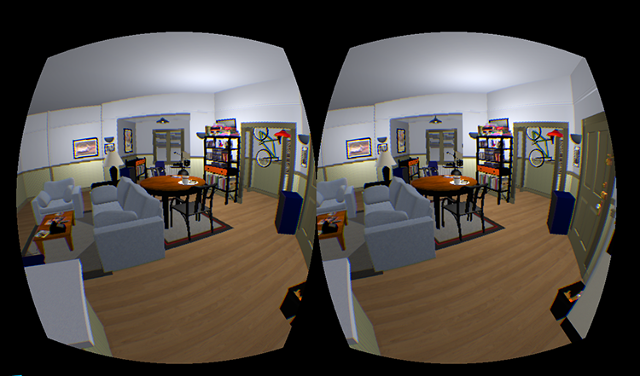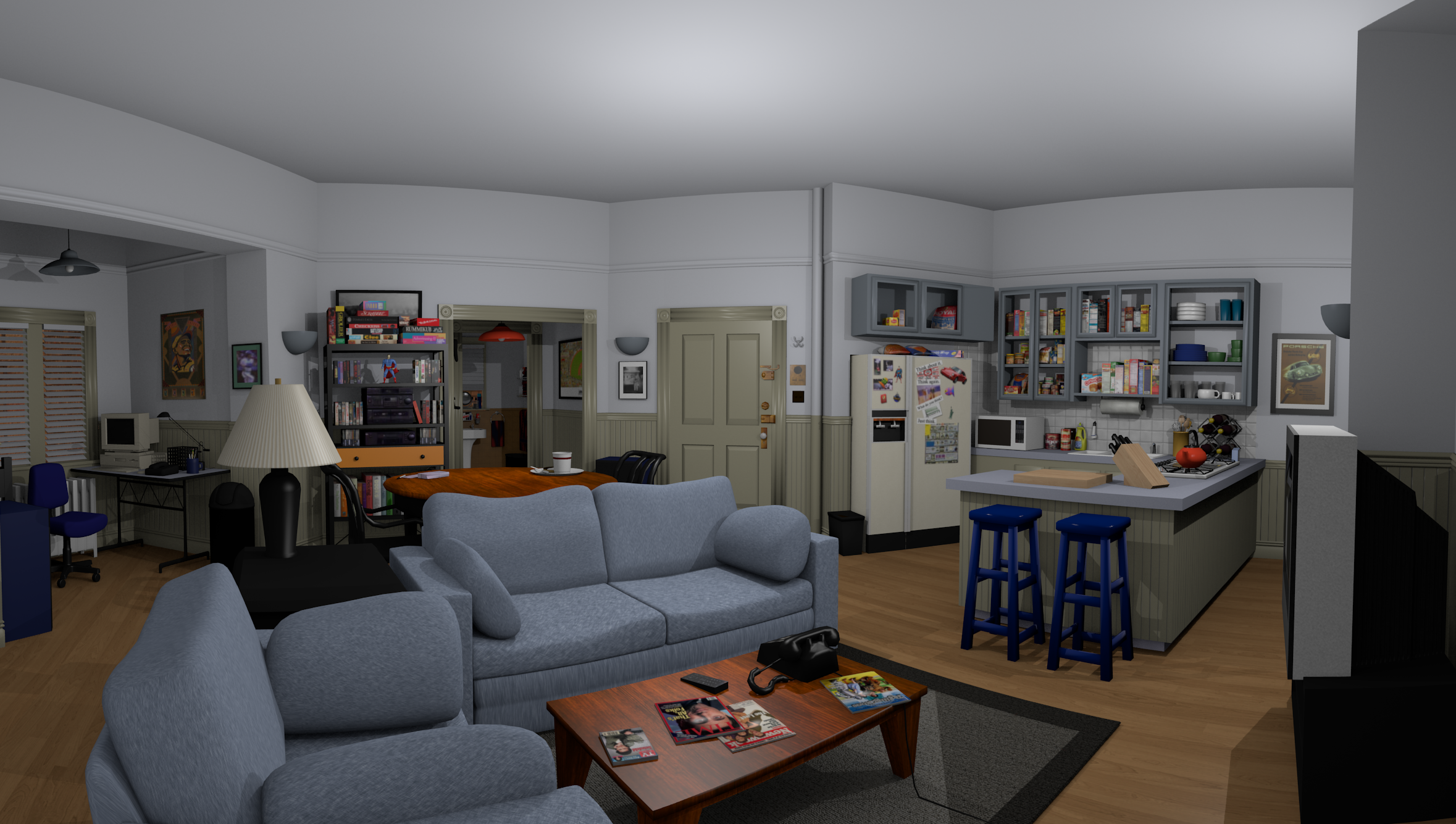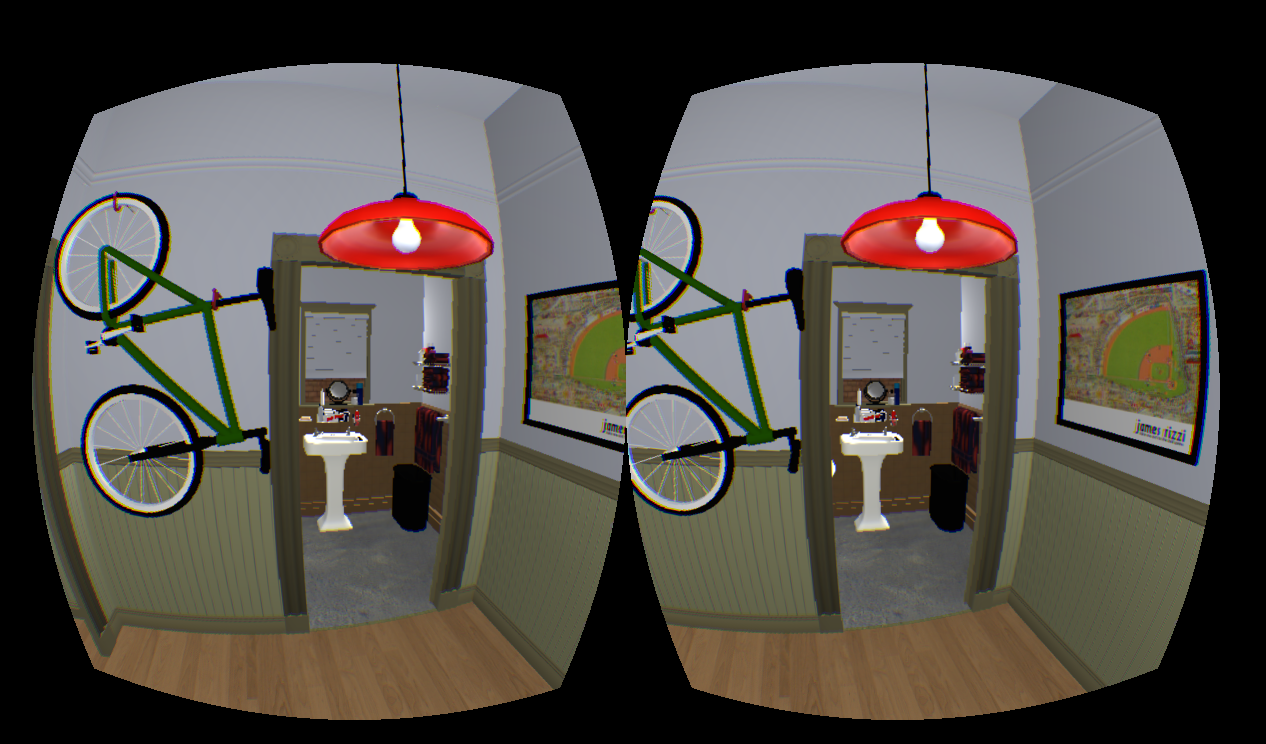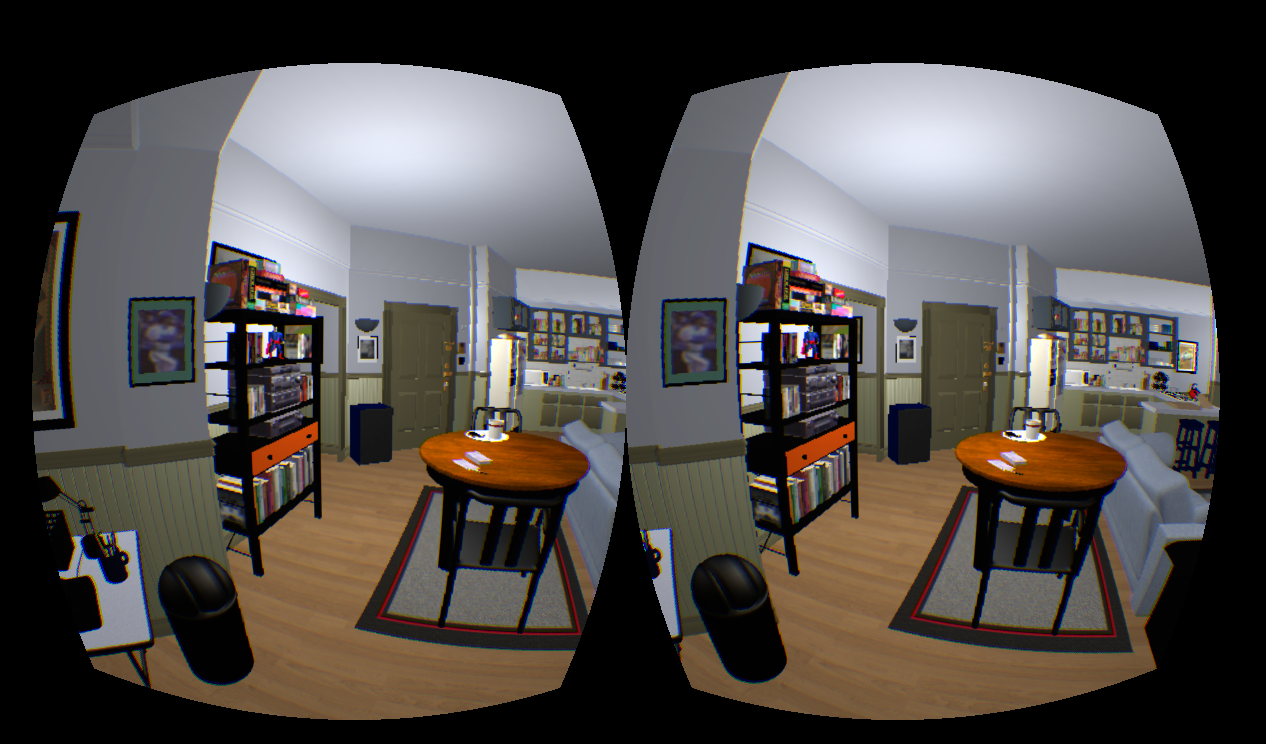After two months of taking screen captures and coding, Web designer Greg Miller has re-created a place intimately familiar to many Americans: Jerry Seinfeld's sitcom apartment.
With the use of the virtual reality headset Oculus Rift, fans of the show can now explore a virtual 3D model of the iconic New York residence.
Users can walk around Seinfeld's apartment, explore all the rooms, and are free to find all 11 episode-specific references that Miller put into his virtual re-creation.
To start, Miller sketched out the entire apartment in a 3D model, he told Fast Company. Then, over two months, he watched Seinfeld and examined screencaps to figure out the minute details of the apartment. He even found 1990s-era labels for Jerry's cereal collection.
Don't own an Oculus Rift? You can still explore the apartment here. "Jerry's Place" is Miller's tribute to fellow Seinfeld fans.
Oculus Rift was designed by Palmer Luckey as a reasonably affordable ($499) device for gaming, but startups like PocketCake are using the technology to bring virtual reality simulations to the architecture and real estate markets.
Luckey told Fast Company that he believes that the future of gaming lies in virtual reality, and thus his headset was created as a way for users to feel as if they are inside the game they're playing. It uses sensors to follow the movement of your head as you look around, cretaing an immersive gaming experience. But it works for exploring your favorite television character's home, too.
Here are screen captures of views of Jerry's Place through the Oculus Rift headset:
Watch this VR model progress video from Greg Miller:
Related Stories
| Oct 5, 2011
GREENBUILD 2011: Brick offers growing options for sustainable building design
Brick exteriors, interiors and landscaping options can increase sustainability that also helps earn LEED certification.
| Oct 5, 2011
GREENBUILD 2011: Roof hatch designed for energy efficiency
The cover features a specially designed EPDM finger-type gasket that ensures a positive seal with the curb to reduce air permeability and ensure energy performance.
| Oct 4, 2011
GREENBUILD 2011
Click here for the latest news and products from Greenbuild 2011, Oct. 4-7, in Toronto.
| Oct 4, 2011
GREENBUILD 2011: Methods, impacts, and opportunities in the concrete building life cycle
Researchers at the Massachusetts Institute of Technology’s (MIT) Concrete Sustainability Hub conducted a life-cycle assessment (LCA) study to evaluate and improve the environmental impact and study how the “dual use” aspect of concrete.
| Oct 4, 2011
GREENBUILD 2011: Johnsonite features sustainable products
Products include rubber flooring tiles, treads, wall bases, and more.
| Oct 4, 2011
GREENBUILD 2011: Nearly seamless highly insulated glass curtain-wall system introduced
Low insulation value reflects value of entire curtain-wall system.
| Oct 4, 2011
GREENBUILD 2011: Ready-to-use wood primer unveiled
Maintains strong UV protection, clarity even with application of lighter, natural wood tones.
| Oct 4, 2011
GREENBUILD 2011: Two new recycled glass products announced
The two collections offer both larger and smaller particulates.
| Oct 4, 2011
GREENBUILD 2011: Mythic Paint launches two new paint products
A high performance paint, and a combination paint and primer now available.



















